Charlottetown
Surveyor General Captain Samuel Holland had the task of mapping and structuring the new British colony and it was he who decided the location of Charlotte Town which in 1768 it became capital of the colony. It was named after Queen Charlotte, the wife of British King George III. Charlottetown is known as the birthplace of Canada. In September 1864 the Charlottetown Conference discussed a plan to bring the colonies of Canada, Nova Scotia, New Brunswick, Newfoundland, and Prince Edward Island under one government. This led to the formation of Canada on July 1st, 1867. Prince Edward Island, however, did not initially consider the terms fair enough and hence remained outside of Canada until 1873.
Prince Street at Sydney Street
Charlottetown has a population of less than 35,000, making it the smallest Provincial capital in Canada. It is easy to get round the downtown area on foot, and that is by far the best way of seeing it. There are many old buildings to be found, particularly in the area around Great George Street. This picture shows a row of old buildings in Prince Street.
Charlottetown waterfront
The centre of the Charlottetown’s waterfront is Confederation Landing, a park that marks the site of the historic landing of the Fathers of Confederation in 1864. From Confederation Landing the view undoubtedly looks very different from that seen in 1864, but there are still a lot of old buildings to be found. The modern buildings have been kept relatively low rise, so the spires of St Dunstan's Basilica still stand out to the right of the picture.
St Dunstan's Basilica
Many Irish immigrants came to the St John Island, and the colony briefly flirted with the name ‘New Ireland’. The Irish brought with them their strong Catholic faith and their legacy is visible in the form of St. Dunstan's Basilica, the spiritual centre of the Catholicism in PEI. It is the fourth Roman Catholic church to occupy this site since a small wooden church was built in 1816. A larger church built in 1863 was replaced by a stone cathedral in 1896, but this burned down in 1913. The current St. Dunstan's Basilica with its high Victorian gothic style was built of miramichi freestone during the World War I. It is one of the largest buildings of its kind in eastern Canada and famed for the Italian carving on its altar and a superb rose window.
Falconer-Blanchard House
Another old building, this time in Sydney Street. This house was built in 1868 for the Reverend A Falconer, and was renovated in 1979 by Heritage Canada.
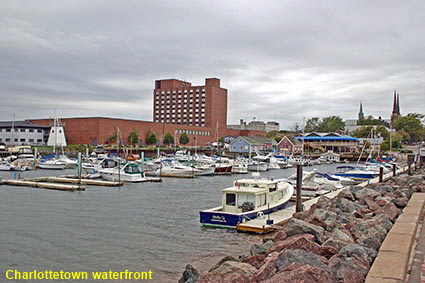
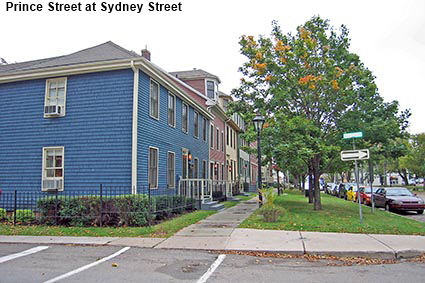
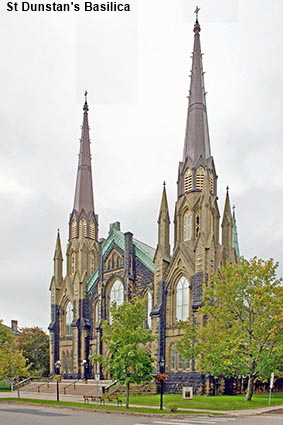
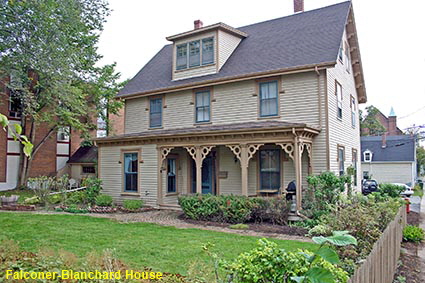
Click on Minimap to navigate
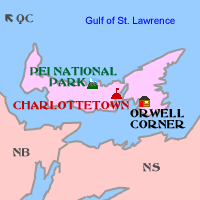


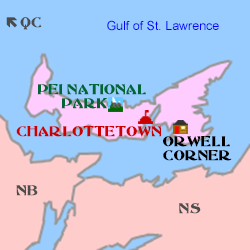
To move forwards or backwards through the Prince Edward Island trail click the arrows above, or select your next destination on the Minimap.
DLU060614
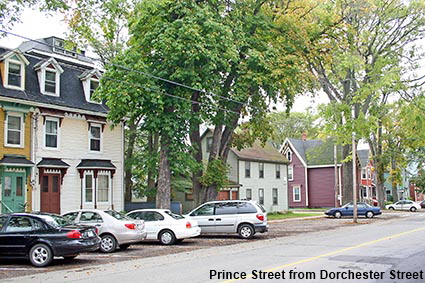
Prince Street from Dorchester Street
It would be unfair to say that time has passed Charlottetown by, there are plenty of modern buildings in the downtown area and near the waterfront. However, in the area between downtown and the waterfront there are roads with plenty of well maintained old houses.
© Mike Elsden 1981 - 2023
The contents of this page may not be reproduced in full or in part without permission